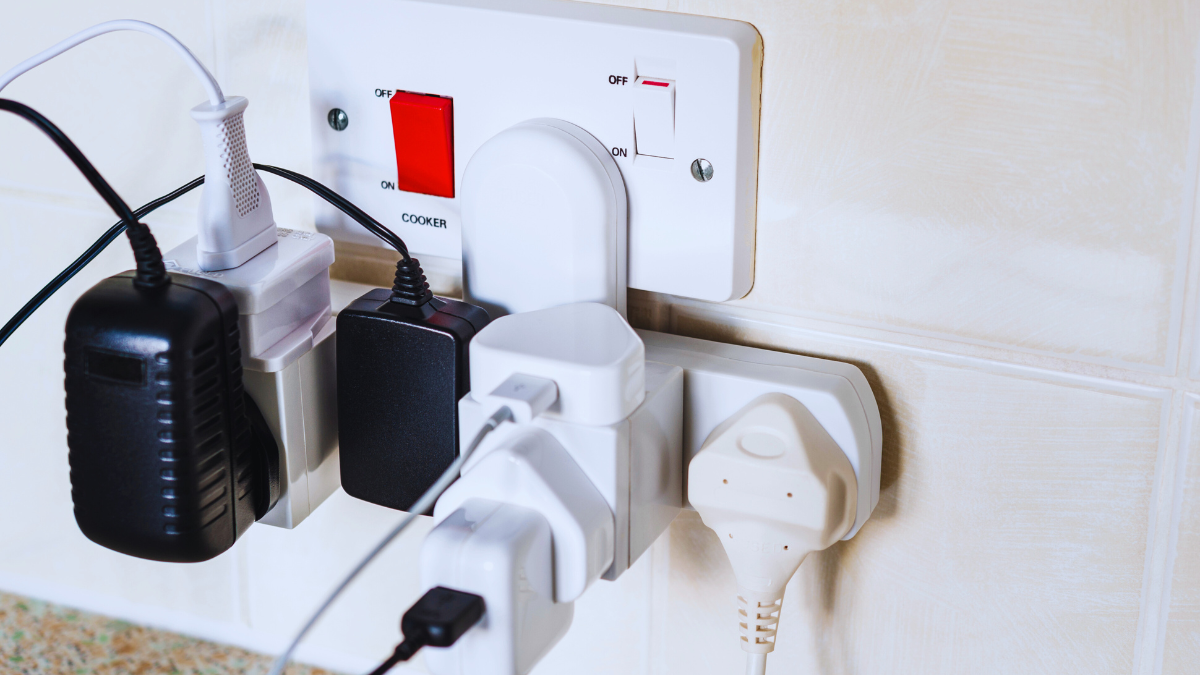Normal socket mein aur Power socket mein kya farak hota hai?

Ek normal socket 5A ka hota hai aur ye lamp ya charger jaisi light load wali appliances ko chanle ke liye use hota hai. iska size 15A socket ke muqable chota hota hai. ye socket 1kW tak ka load utha sakta hai. aur isse distribution box se 1.5mm thick wires ka use krke connect kiya jata hai, Yeh ek 6A ke MCB se protected hota hai. jo 6A ampere se zada curret flowe hone pr trip ho jata hai aur wires ko jalene se bhi bachata hai.
5A socket ko hi inverter se connect kiya jata hai. Jisse inverter ke over load hokar band hone ke chanes kam ho jate hai.

Ab baat karte hain Power socker ki 15A socket ki, jo heavy appliances jaise ki AC, washing machine, aur fridge ke liye design kiya gaya hai, . Ek Power socket 15 Amp ka hota hai aur 3kW tak ka load utha sakta hai. Isse 2.5mm se le kar 4mm thick wire ke sath distribtion box me connect kiya jata hai, jo easily heavy load ko handle kar leti hai.

Power socket ko 16A ke mcb ke sath lgaya jata hai. Jo zada current aur short circuit hone pr electricity ki supply rok deta hai. issi liye apko kabhi bhi power plugs ko 5A socket se connet krne ke liye aise converters ka isemal nai krna chaiye. isse wires garam hokar melt ho salti hai aur aag lagne ke chances bhi badh jate hai.
History
Jab 1880s mein bijli gharon mein aayi, toh iska istemal zyada tar roshni ke liye hota tha. Lekin vacuum cleaners, electric fans, smoothing irons, aur curling tongs jaise anya appliances ke liye ek safe connection ki zarurat thi. Iska ek common tarika light bulb sockets ko lampholder plugs se connect karna tha.
Britain mein, 1885 tak 2-pin plugs aur wall sockets market mein aa gaye the. British patent 4162, jo Thomas Tayler Smith ne 1882 mein diya tha, iske liye ek safe connection system propose karta hai. Smith ne US patent 311,616 bhi 1885 mein liya. John Mellanby kehti hain ki British patents bhi 1883 aur 1884 mein diye gaye the, aur 1885 tak 2-pin designs aa gaye the.

Gustav Binswanger, jo General Electric Company ke founder the, ne 1895 mein concentric (co-axial) contact system ke liye patent liya.
America mein, Harvey Hubbell ne early electrical plug aur socket designs develop kiye. 1903 mein unhone 2-pin plugs aur adaptors ke liye patents file kiye. Hubbell ka pehla design round pins wala tha lekin unhone is design ko unsatisfactory paaya. Isliye 1904 mein, unhone flat pins wala design introduce kiya, jo aaj bhi widely used hai.
Hubbell ke designs mein ek feature common tha: detents jo plug ko socket mein securely hold karte the. Ye feature especially useful tha jab wall receptacles itne common nahi the aur zyada tar logon ke paas sirf light socket tha.
1914 ki ek kitab “Electric cooking, heating, cleaning, etc.” mein Maud Lucas Lancaster ne ek earthed iron-clad plug aur socket ka zikr kiya, jo English firm Reyrolle and Co. ne banaya tha.
America mein, earthed plug ke liye sabse pehli patent application 11 January 1915 ko George P. Knapp ne Harvey Hubbell company ke liye file ki. U.S. patent 1,179,728 mein ek earthing pin ka design diya gaya, jo baaki do contacts se zyada lamba hota tha, taaki wo pehle engage ho. Knapp ka design modern NEMA designations ke pehle obsolete ho gaya, lekin ye aaj bhi kuch countries jaise China, Argentina aur Australia mein use hota hai.
Iss design ki socket existing unearthed plugs ke saath compatible nahi thi. Aaj ke American earthed sockets unearthed plugs ke saath kaam karte hain. Kabhi kabhi kaha jata hai ki modern American earthed plug Philip F. Labre ne invent kiya, jise 1928 mein U.S. patent 1,672,067 diya gaya. Lekin Labre ka design modern version se zyada similar nahi tha Knapp ke earlier design se.
German Schuko-system plug ko 1925 se lekar Albert Büttner se joda jata hai. Jab safety ke liye zarurat badh gayi, to earthed three-contact systems ko zyada tar industrial countries mein mandatory kar diya gaya.
Also read:

